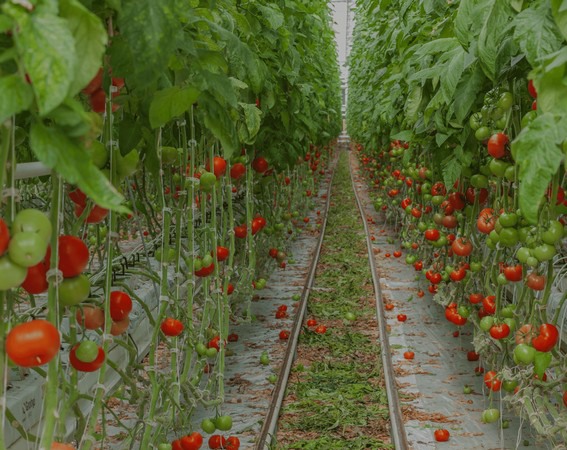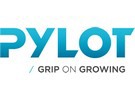The world moves more and more to online practices, and so does the agriculture industry. Ever more agricultural businesses turn to data-driven practices. Data-driven agriculture means analyzing data and using data to grow more and better. Data are not collected in your greenhouse only. Data from around the world will allow you to take intelligent actions and optimize your practice. It enables you to make strategic decisions based on the data, the analysis, and the interpretation. Data-driven activities follow three steps:
- The collection of data from the field you're interested in.
- The analysis of these data
- The drawing of conclusions and putting them into action.
Greenhouses ask for an investment to become high-tech, but with a data-driven approach, the return on investment can be high. This sounds good, but what are effectively the benefits of data-driven growing for high-tech greenhouses?

1. You have increased control over the growing environment in your greenhouse
A vast amount of data can be collected in a greenhouse. You can place sensors inside the greenhouse to collect data that make it possible for you to control the most important climatic conditions, such as temperature, humidity, light, and CO2 levels. As the sensors work all the time, you can adjust settings inside the greenhouse whenever you know this is needed to create the optimal environments for your plants so that you can optimize plant growth. As a result, you'll have healthier plants and higher yields.
2. You can reduce the use of water and energy in the greenhouse
These same sensors can be used to monitor soil moisture levels. By monitoring the data for a while, you can see patterns. You can make sure to only water the plants when this is necessary and water them with the correct amount of water. This will allow you to reduce the cost of water and energy, which is good for the total cost of your greenhouse, and also sustainable, which is important nowadays. Then you can also equip your greenhouse with LED lights that use less energy, and based on the data, you will know when and with which intensity you should turn them on so that the plants inside always have the same and correct level of light. A cost reduction that benefits the health of your plants.
3. You will improve the quality of the crop
Use the data that is collected from the sensors in your and in other greenhouses to optimize the growing conditions for specific plants and crops. Sensors monitor crops, soil, and resources, which are needed to farm more efficiently. It will be easier to manage the use of pests, water, and other supplements needed by your plants. The correct use of data and the use of artificial intelligence increase the yield, but also the quality of this yield. The pests you use will be recommended ones, therefore not or less harmful to the planet. Algorithms can classify and analyze data and draw conclusions, and even make predictions. It can allow you to produce higher-quality crops that are, for instance, more resistant to diseases or pests. It will also help you choose which crops to grow in your specific greenhouse and its soil. Not only will your yield be bigger, but your risk will also be substantially lower.
4. You achieve yields that are up to 50% higher than with a traditional greenhouse
Big data, which are data collected around the world and in your neighborhood, can give you data on rainfall, fertilizer requirements, and much more. It allows your greenhouse and you to make decisions about what to plant, when to harvest, etc. It allows you to make the right decisions for your greenhouse, your yields, and therefore your future in agriculture. It can help you plant with precision and automate the harvest at the very best moment. Combined with the best growing conditions, it will allow data-driven greenhouses to achieve much higher yields than traditional greenhouses, which is good for your business and for the need to feed an ever-growing population.
5. You can reduce the cost of labor and equipment
There are several ways data-driven practice in your greenhouse can reduce labor and equipment costs:
Tasks such as irrigation or the injection of fertilizers can be automated. There is less need for manual labor in the field. The use of sensors combined with the right alerts will make sure problems are detected at an early stage. You can, therefore, often avoid expensive repairs and the cost of the repairman. Equipment such as tractors can give alerts when servicing is needed or when they need to be fuelled, which can save time. As efficiency and yield increase, the cost of labor per unit or output will decrease.
Garbage in is Garbage out
You might have heard this expression before, and it is often used in the world of data handling and data science. Garbage in is Garbage out (GIGO) is exactly what it says to be: if you put bad data in your system, you'll get bad results, in this case, bad greenhouse advice. Your system might give you controversial predictions and conclusions, and it will give you bad insight into your greenhouse, which can easily lead to bad decisions. What are bad data? Bad data are not only wrong data, but they can also mean missing data or data that is much different from the other data, for example. For Machine Learning and Artificial Intelligence, reliable data are primordial. Professional analysis of the data, combined with the correct software, can diminish the problem.
Conclusion
As you can see here, data-driven agriculture has several benefits over traditional cultivation, most of them reduce costs while increasing yields in quality and in quantity. We can, therefore, quite safely say that a high-tech greenhouse has a good or even a high return on investment. Furthermore, the reduction of the use of water and energy is important in today's life and thus in agriculture. If you're looking to improve your greenhouse operation, consider implementing some data-driven practices today.
For more information:
Pylot
info@pylot.nl
www.pylot.nl
